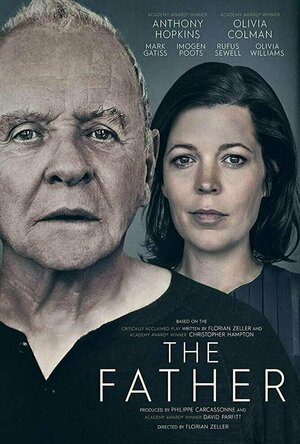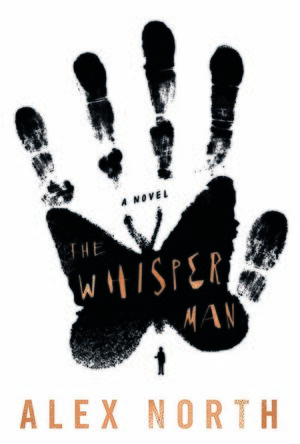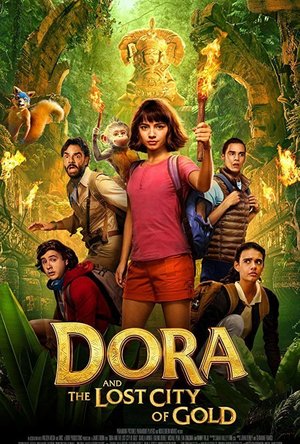Graham Massey recommended The Nubians of Plutonia by Sun Ra in Music (curated)
Bob Mann (459 KP) rated The Father (2020) in Movies
Jun 12, 2021
Positives:
- I was one of those disappointed that Chadwick Boseman didn’t posthumously win the Best Actor Oscar for “Ma Rainey’s Black Bottom”. But, boy oh boy, after seeing this I am fully supportive of the Academy’s position. Anthony Hopkins has delivered some astonishingly powerful performances during his career – from the tortured ventriloquist in “Magic”, to Hannibal Lector to the elderly pope in “The Two Popes”. But he really excels himself here, tapping both your emotions and your sympathies as the confused and terrified old man.
- The Oscar- and BAFTA-winning screenplay by Florian Zeller, based on his stage play, is devastating, subtly twisting the knife. It will be particularly telling/upsetting for those who are getting on in years and/or have/had elderly parents affected by dementia. I would personally not have included (being deliberately vague) the “Williams entry” scene in the trailer, since it is a jolt of a twist in the film. But there are so many other clever devices in the screenplay that you don’t see coming. The ending in particular is brutal on the emotions.
- The production design (an Oscar nomination for Peter Francis and Cathy Featherstone) is ingenious, as the set subtly and progressively transforms. Almost a ‘spot the difference’ in movie form.
- The score by Ludovico Einaudi uses atonal strings to great effect, as Anthony’s reality keeps shifting from under him.
Negatives:
- I’ve nothing here, hence my 10-bomb rating. I’ve seen some reviews that have thought that the movie was too “stagey” (which is a criticism I have levelled before at a bunch of “stage to screen” adaptations such as “Fences” and – more recently – “One Night in Miami” and “Ma Rainey’s Black Bottom“). But I really didn’t feel that way about “The Father”. The claustrophobic nature of the plot was well served I thought by the (largely) single set location.
Summary Thoughts on “The Father”: Dementia is a cruel and heartless disease that robs any affected elderly person of their memories, logic and – ultimately – their dignity. I thought the movie was extremely clever in reflecting this decline, anchored by the astonishing career-best performance from Sir Anthony Hopkins. But this in turns makes this a very hard watch indeed!
(For the full graphical review, check out the One Mann's Movies post here - https://bob-the-movie-man.com/2021/06/12/the-father-dementia-twists-the-strands-of-anthonys-personal-multiverse/ . Thanks.
BookInspector (124 KP) rated The Whisper Man in Books
Sep 24, 2020
I really enjoyed this book and the story. The characters chosen for this novel are quite ordinary, but at the same time incredibly mysterious. I really enjoy reading multiple perspectives, and especially when the murderer’s thoughts are incorporated as well, and this book didn’t disappoint me with that. I really liked how the author delivered the characters, he concentrated on the important ones, and I was able to find out more about them. My favourite character has to be Jake, he is smart, sweet, interesting, and he truly shines in this book. I really enjoyed the variety of characters as well.
The narrative of this novel is very creatively crafted, it has plenty of twists and surprises, and I really liked the way Alex North was building up the suspense throughout this novel. This book had not only chills and thrills, but also some very deep and insightful monologues as well. The characters discussed such topics as loss and how they are dealing with it, how fathers influence their sons, alcoholism and it’s consequences, single parent struggles, and many more. Even though there are female characters in this novel, the author concentrates more on Father-Son bond and relationships, and it feels quite masculine at times, and I really liked reading about it.
I enjoyed the writing style of this book, the book was very well composed and delivered. The chapters are short, so it was very hard to put it down. There are some very disturbing scenes in this book related to dead seven-year-old children, so it is not for faint-hearted readers. Even though this story is very gripping, I was expecting something more from the culmination, it was good, but it could’ve been even better. I liked how this book ended, I think it rounded the story very nicely. There is not much information about the author himself, but I believe it was his debut novel, and I truly hope that there will be more coming in the near future. 🙂
So, to conclude, it was a true page turner for me, that left me scared at night. I loved the complex characters, unexpected discoveries, and always lingering fear and creepiness. I thoroughly enjoyed this book, and I strongly recommend it to all mystery and thriller fans. There are rumours that there will be a film, and I absolutely can’t wait to see, how it will be adapted to the big screen.
Sarah (7800 KP) rated Bloodshot (2020) in Movies
Oct 9, 2020
Bloodshot is based on a Valiant comic of the same name which tells the story of Ray Garrison, a soldier killed and brought back to life with the use of nanites, giving him superhuman powers and a thirst for revenge.
Going into this film I knew nothing about it, I hadn’t even seen a trailer. My only misgiving was regarding Vin Diesel, who like Keanu Reeves, is great to watch in action but sadly his acting skills leave a little to be desired. Surprisingly I didn’t mind Vin Diesel in this, and it probably stems from the fact that he spends most of his time in action with very little opportunity for any more meaningful or emotional scenes (thankfully).
The first half of this film had me worried. It opens with some irritating slow motion action shots and then progresses into what is rather a predictable and done to death origin film revenge plot. There are some good points though: the action scenes and CGI were very well done and choreographed, the filming locations are beautifully shot, and the dancing scene with Toby Kebbell was a riot, almost feeling like it would’ve been better placed in something made by Tarantino rather than this.
Had the film carried on in this same vein for it’s entire runtime, I would’ve switched off. However there was a reveal halfway through that provided a much needed boost to the story and a great deal of humour, and I never saw it coming. This pushed this film from being pretty poor to fairly enjoyable and entertaining.
That isn’t to say it doesn’t have it’s flaws. Guy Pearce is playing the same character he seems to have played in everything else recently and Toby Kebbell is massively underused. The remaining members of the team are rather cliched villains or just completely forgettable. And there’s a scene towards the end with a pouting and over the top KT that is so cheesy and cringeworthy it’s laughably bad. There’s also an action scene set in London that has been obviously not been filmed in London (or in the UK at all from the look of the buildings and vehicle registrations), so there are a few missteps with the production and the finale has far too much CGI as well.
Overall I was expecting this to be atrocious and was rather pleasantly surprised to find myself laughing and enjoying it to a point. It is by no means perfect and will never win any awards, however if you’re looking for some brainless action and entertainment you could do much worse than Bloodshot.
Kristy H (1252 KP) rated The Furies in Books
Sep 26, 2019
The girl is found dead on a swing on a playground on Elm Hollow Academy property--no known cause of death. That's how this novel opens, and then we have Violet, who tells us the story looking back, recounting her time at Elm Hollow. So the story opens dramatically and we know something has terrible happened. And that Violet makes it out okay.
"Inconclusive, they said, as though that changed the fact of it, which was this: a sixteen-year-old girl, dead on school property, without a single clue to suggest why or how."
This book should be been really good--I'm a sucker for private school tales (I thought it was a boarding school one, as well, but it wasn't)--but it just didn't work for me. I thought about putting it aside several times, but I just couldn't. I need to work on my DNF skills.
There is a lot here: two dead girls; witchcraft and the occult; mythology; friendship and coming of age--and none of it feels fully explored. A lot of the book focuses on mythology as Annabel teaches some of it to the girls (I felt myself skimming over that, and I like mythology). There's the focus on witchcraft, but it never seems fully embraced. There's a lot of violence (won't go too far for spoilers) but there are never really any consequences. It's very strange, and honestly, not the sort of YA book I'd encourage for teens.
And, then, I just didn't care for these characters. Robin is hateful, and I couldn't form a bond with Violet, our narrator. That would be all well and good if the action was enough to keep my interest, but it wasn't. The book just felt jumbled, and I wasn't interested in picking it up. Even a few late twists didn't really redeem things for me.
Lots of others have found the story powerful, however, so if you like mean girls with a side of possible witchcraft, you may enjoy this more. 2 stars.
Lee (2222 KP) rated Dora and the Lost City of Gold (2019) in Movies
Aug 28, 2019 (Updated Aug 28, 2019)
Kicking off with a seriously fun nostalgia trip for anyone who has seen more than their fair share of Dora episodes, the movie pretty much recreates the opening credits from the TV show. The song! Dora's talking backpack and map! And cousin Diego is there too!! But, it turns out Dora and Diego aren't actually just a couple of kids driving recklessly around the jungle in a jeep - they are in fact just using their imagination, driving a homemade cardboard vehicle at the jungle home where Dora lives with her parents.
10 years later and Dora hasn't really changed that much, enthusiastically exploring the jungle and communicating with all of the animals. When her parents (played by Michael Peña and Eva Longoria) decide to venture off in search of a lost city of gold, they pack Dora off to the big city where she joins Diego at high school. But Dora and her over friendly, extrovert ways prove to be a big embarrassment for cousin Diego, who has grown up to be a fairly normal, moody teenager, leaving behind his imaginative jungle childhood.
When her parents suddenly go missing one day, Dora enlists the help of Diego and a couple of unwitting fellow students to venture with her into the jungle in order to try and find them and the lost city of gold. What follows is an extremely enjoyable jungle adventure, complete with mysteries, puzzles to solve, and even bad guys too. Isabela Moner, who featured earlier this year as a troubled teenager in the brilliant Instant Family, is perfect as Dora as she brings the older version of the character to life. Her teen co stars all bring something different to the story too, and prove to be a real fun, mixed cast.
Throw in a poo song, an animated Dora scene brought on by breathing in hallucinogenic pollen and a catchy final song and dance number and Dora and the Lost City of Gold is the summer family movie you never knew you needed in your life!

Weather 14 days
Weather and Travel
App
Weather 14 days is completely FREE with the latest weather information for USA and the rest of the...

Radar HD - Future Weather Radar and Severe Alerts
Weather and News
App
Fast. Simple. Predictive high-resolution weather radar. Severe weather warnings. Storm tracks and...

Refills - Calendar & Tasks
Productivity and Business
App
* We have now added support for iOS Reminders! (Jun 2014) * We are excited to announce that Refills...

Cycles – Period Tracker
Health & Fitness and Medical
App
Cycles keeps track of your period and fertility without all the inputting and upkeep of similar...





